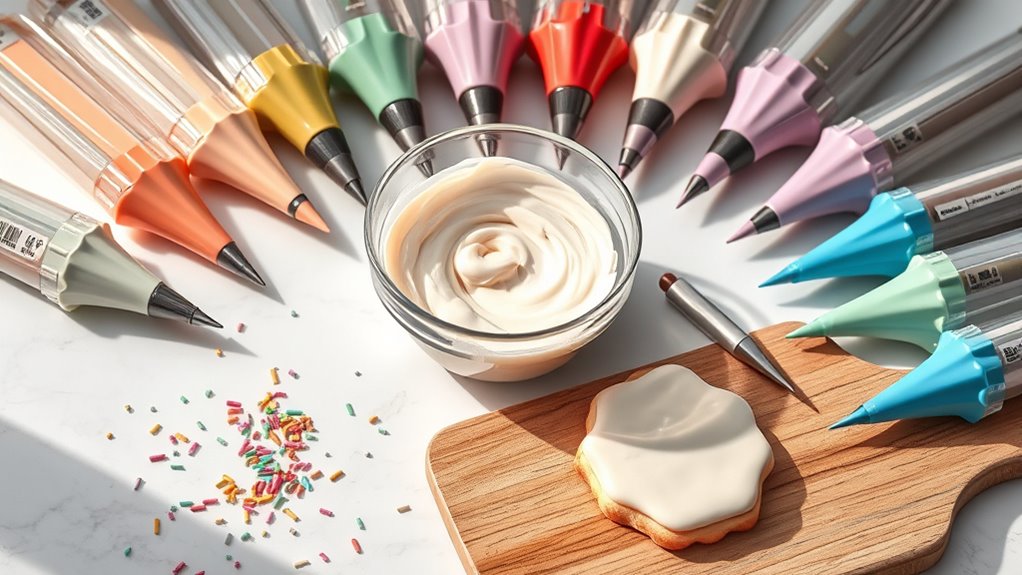To make easy cookie icing, start by sifting 1 cup powdered sugar to avoid lumps. Gradually mix in 2 tablespoons of milk and 1 teaspoon vanilla extract until smooth. Keep your ingredients room temperature for better blending. Mix at low speed first, then increase slightly for a glossy finish. Adjust thickness by adding sugar or milk. Once ready, spread or pipe on cooled cookies for best results. Stick around to discover tips for perfect texture and serving ideas.
Ingredients and Quantity
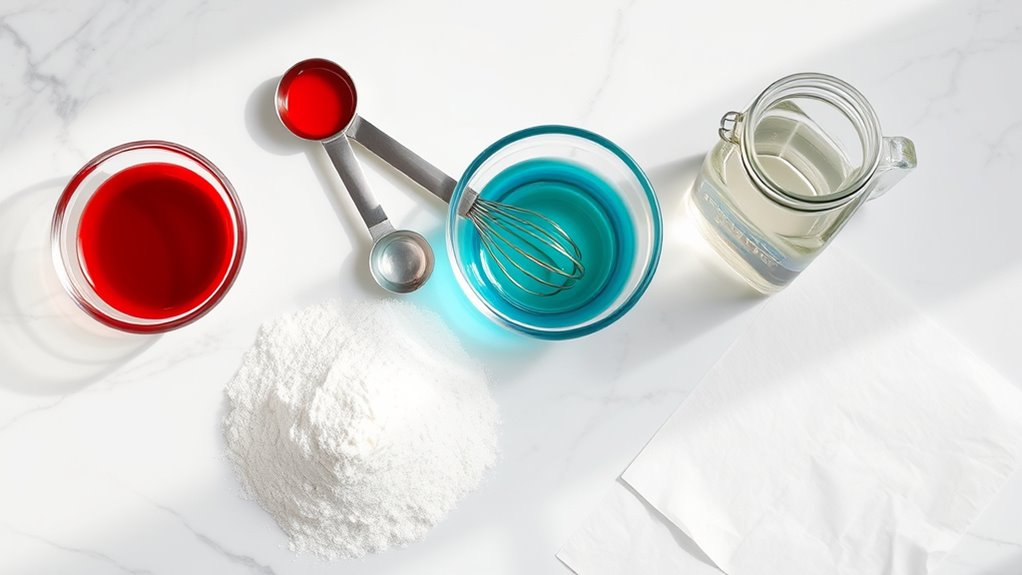
To make this easy cookie icing, you’ll need four key ingredients: powdered sugar, milk, vanilla extract, and a pinch of salt. These components form the base for various icing types and allow you to explore flavor variations by adjusting quantities or adding extracts. Precise measurements guarantee consistent texture and taste.
| Ingredient | Quantity |
|---|---|
| Powdered Sugar | 1 cup |
| Milk | 2 tablespoons |
| Vanilla Extract | 1 teaspoon |
The pinch of salt balances sweetness and enhances flavor. You can customize by substituting vanilla with almond or lemon extract, adapting the recipe for your preferred icing type—glaze or royal icing. Mastering these ingredients gives you freedom to craft perfect cookie decorations every time.
Preparations
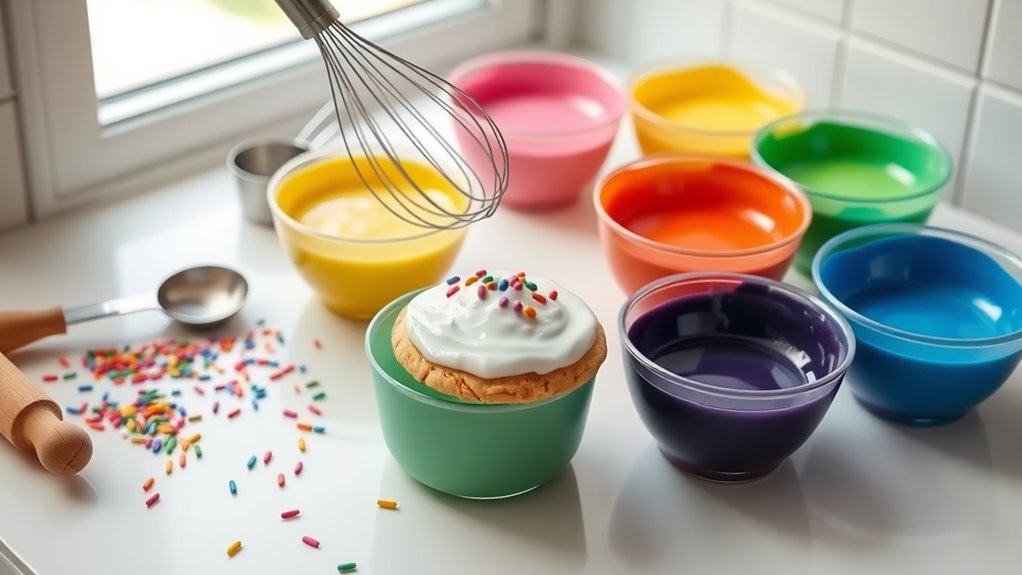
Before mixing your icing, make sure all ingredients are at room temperature to guarantee a smooth texture. Precise preparation guarantees ideal icing consistency and allows for easy incorporation of flavor variations. Here’s what you should do:
- Measure ingredients accurately using a digital scale or standard measuring tools.
- Sift powdered sugar to eliminate lumps that affect smoothness.
- Select a mixing bowl large enough to accommodate expansion during whipping.
- Prepare flavor extracts or zest in advance for quick addition.
- Have a clean, dry spatula and whisk ready for efficient mixing.
These steps help you control texture and taste, giving you the freedom to customize your icing effortlessly. Proper preparation sets the foundation for a flawless, easy-to-work-with cookie icing every time.
How to Prepare
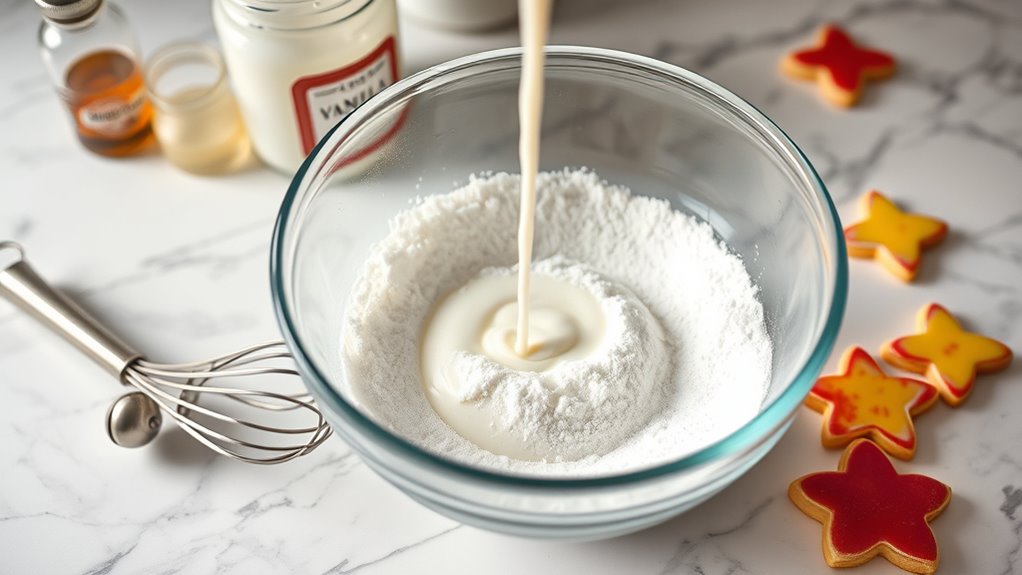
- Begin by combining powdered sugar with a small amount of liquid, such as milk or water, gradually.
- Use this incremental approach to control the consistency, preventing the icing from becoming too runny or too stiff.
- Start mixing at a low speed to avoid incorporating air bubbles.
- Increase the mixing speed slightly to ensure the icing becomes smooth.
- Add flavor extracts last, adjusting the amount to taste without affecting the texture.
- Aim for a glossy, spreadable finish that adheres well to cookies without dripping.
- Maintain a balance between thickness and fluidity to ensure the icing spreads easily without sliding off.
- Use this method to customize your icing consistency perfectly.
How to Serve
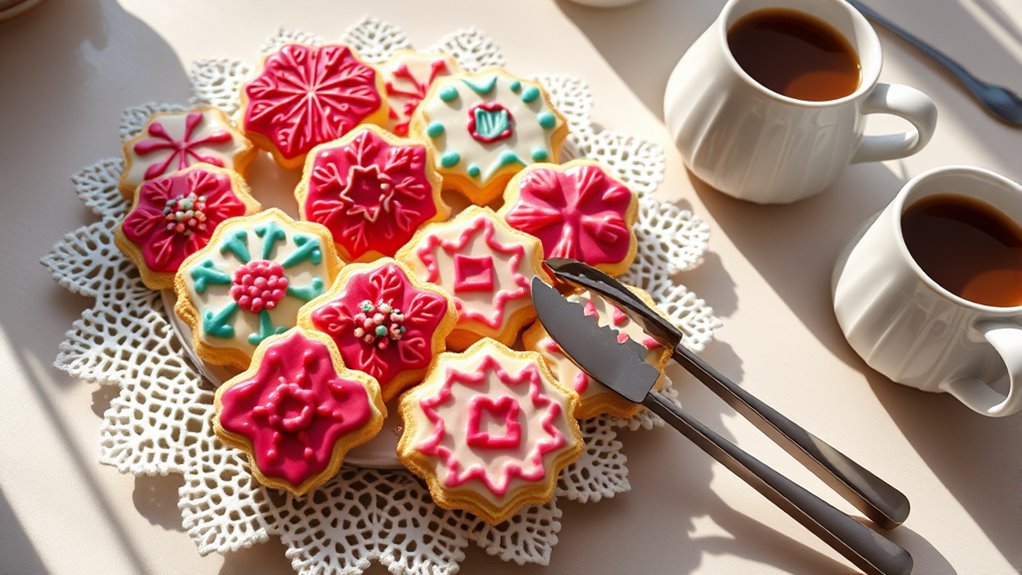
When your icing has set to a firm yet slightly tacky finish, you’ll know your cookies are ready to serve. Proper cookie presentation enhances appeal and enjoyment. Consider these serving suggestions to maximize impact:
- Arrange cookies on a clean, decorative platter to highlight their colors and shapes.
- Group cookies by flavor or design to streamline selection and showcase variety.
- Accompany with complementary beverages like tea or coffee for a balanced experience.
- Use parchment paper or doilies to prevent sticking and maintain freshness.
- Offer serving tongs or small plates to encourage hygienic handling.
Tips
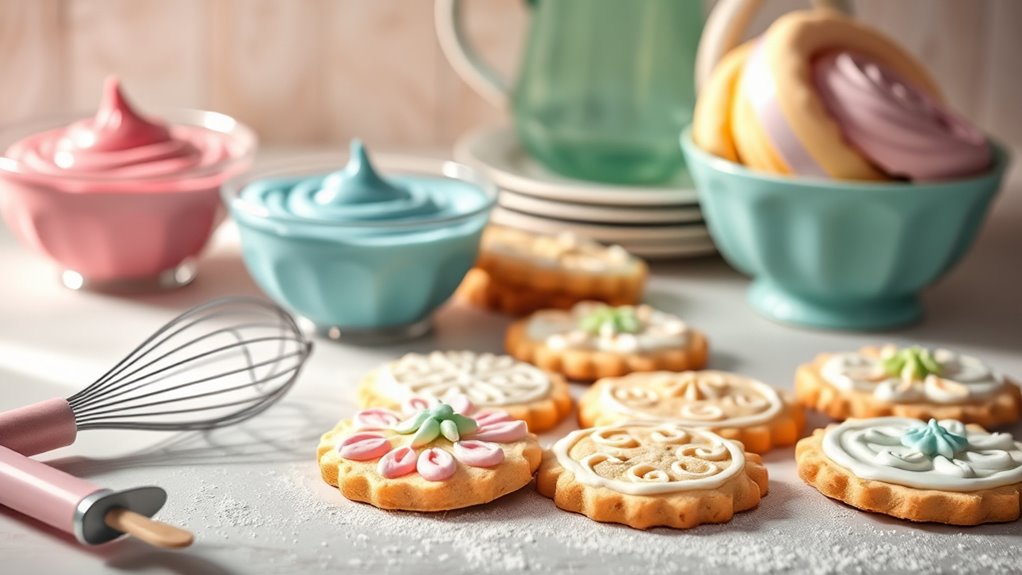
Since achieving the perfect consistency can be challenging, you’ll want to carefully measure your ingredients and adjust the icing’s thickness by adding small amounts of liquid or powdered sugar as needed. Mastering precise icing techniques allows you to control flow and texture, essential for clean lines or smooth coverage. Use a piping bag with interchangeable tips to experiment with decorating ideas like dots, borders, or intricate patterns. Keep your workspace cool to prevent the icing from melting prematurely, and cover your icing when not in use to avoid drying out. Practice steady hand movements and test your designs on parchment first. These tips guarantee your cookies look professional while giving you the freedom to customize your creations with confidence and style.
Food Value and Benefit
The prepared cookie icing primarily provides energy through its carbohydrate and fat content. By incorporating alternative ingredients, this icing can offer a more balanced nutritional profile with added health benefits.
Cookie icing delivers quick energy from carbs and fats, with alternatives enhancing nutrition and health benefits.
Benefits of Eating This Recipe:
- Provides quick energy from natural sugars and healthy fats.
- Contains healthier fats when using coconut or avocado oil, which support heart health.
- Lower calorie content when using powdered erythritol or stevia, aiding in weight management.
- Added protein powder contributes to muscle repair and satiety.
- Vitamin-rich extracts like vanilla and almond enhance flavor without extra calories.
Vitamins and Minerals Present:
- Vitamin E (from coconut or avocado oil), which acts as an antioxidant.
- Small amounts of B vitamins from natural sweeteners like honey or maple syrup.
- Trace minerals such as manganese and calcium from maple syrup.
- Potential vitamin A and iron content depending on protein powder used.
